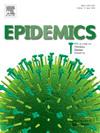疫情恢复正常后污水监测的优化:以香港为例
IF 2.4
3区 医学
Q2 INFECTIOUS DISEASES
引用次数: 0
摘要
污水监测(WWS)对香港应对COVID-19至关重要,它提供了早期预警指标,并在大流行期间采取了有针对性的措施来控制香港的疫情。随着应对COVID-19的方法从遏制过渡到长期管理,由于资金限制,维持WWS计划变得具有挑战性。本文记录了我们为优化该计划所做的努力,以保证其长期可持续性,同时保持其在跟踪疾病趋势和检测新变异方面的功效。在优化之前,我们的WWS计划每周从120个地点收集样本,涵盖80% %的人口。根据我们的经验,我们研究了几种优化措施,例如减少采样频率和改变测试程序。然而,由于操作和技术上的困难,这些方法被认为是不切实际的。最终,我们确定减少采样点是最可行的方法。利用2023年4月至2024年3月的数据进行的统计分析证实了这一方法,表明尽管样本地点减少了85% %(从120个减少到18个),但与原始模型相比,监测数据保持了高度的可靠性(R²> 0.97)。这种优化的方法在保持数据可靠性的同时减少了大约80% %的费用。通过传播我们的方法和发现,我们的目标是提供有用的信息,帮助其他司法管辖区在全球面临类似困难时建立具有成本效益的WWS系统。本文章由计算机程序翻译,如有差异,请以英文原文为准。
Optimisation of wastewater surveillance for COVID-19 after resumption of normalcy from the pandemic: A case of Hong Kong
Wastewater surveillance (WWS) was critical to Hong Kong’s COVID-19 response, providing early warning indicators and enabling targeted measures to control the epidemic in the city during the pandemic. As the approach to COVID-19 transitioned from containment to long-term management, maintaining the WWS programme became challenging owing to financial limitations. This article chronicles our efforts to optimize the programme to guarantee its long-term sustainability while preserving its efficacy in tracking disease trends and detecting novel variants. Prior to optimization, our WWS programme gathered samples from 120 locations weekly, encompassing 80 % of the population. Drawing from our experience, we examined several optimization measures, such as decreasing frequency of sampling and altering testing procedures. Nonetheless, these methods were deemed impractical owing to operational and technical difficulties. Ultimately, we determined that a reduction in sampling sites was the most viable method. Statistical analyses utilizing data from April 2023 to March 2024 corroborated this methodology, indicating that despite an 85 % decrease in sample locations (from 120 to 18), the surveillance data retained a high degree of reliability (R² > 0.97) compared to the original model. This optimized methodology decreased expenses by about 80 % while maintaining data reliability. By disseminating our methodology and findings, we aim to provide useful information that may aid other jurisdictions in establishing cost-effective WWS systems as they confront analogous difficulties globally.
求助全文
通过发布文献求助,成功后即可免费获取论文全文。
去求助
来源期刊

Epidemics
INFECTIOUS DISEASES-
CiteScore
6.00
自引率
7.90%
发文量
92
审稿时长
140 days
期刊介绍:
Epidemics publishes papers on infectious disease dynamics in the broadest sense. Its scope covers both within-host dynamics of infectious agents and dynamics at the population level, particularly the interaction between the two. Areas of emphasis include: spread, transmission, persistence, implications and population dynamics of infectious diseases; population and public health as well as policy aspects of control and prevention; dynamics at the individual level; interaction with the environment, ecology and evolution of infectious diseases, as well as population genetics of infectious agents.
 求助内容:
求助内容: 应助结果提醒方式:
应助结果提醒方式:


